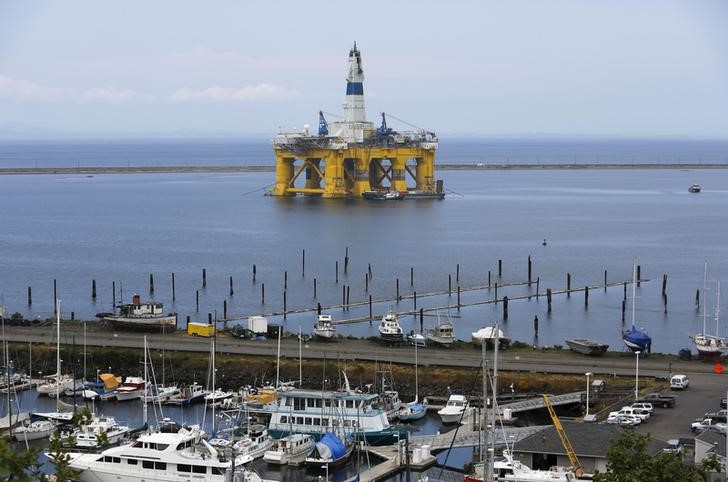* U.S. crude up on technical support
* Weakness in U.S. dollar aided crude price increases
* IEA sees world oversupply lasting through 2016
* Estimate of global oil demand growth cut - IEA
(Rewrites throughout, updates trading prices, adds comments)
By Koustav Samanta
NEW YORK, Oct 13 (Reuters) - Oil prices rose on Tuesday with
technical support for U.S. crude and despite a weaker demand
outlook from the International Energy Agency (IEA) which is
expected to keep the world oil market oversupplied for at least
another year.
Brent LCOc1 futures for November delivery rose 38 cents to
$50.24 a barrel, a 0.8 percent gain, by 11:13 a.m EDT (1513
GMT). U.S. crude CLc1 rose 99 cents or 2.1 percent to $48.09
per barrel.
U.S. crude turned positive and gained over a dollar in
technical trade after failing to break below the 14-day moving
average, traders said.
"Oil prices are a bit firmer today on oversold action
yesterday, trading mostly on technicals," said Richard Hastings,
macro strategist at Seaport Global Securities.
Traders also noted a weaker U.S. dollar, which hit a
three-week low earlier on Tuesday, added some support to the
higher crude prices. urn:newsml:reuters.com:*:nL8N12D2WY
"There is some uncertainty in the trading markets about the
direction of the U.S. dollar, with some trading action in oil
reflecting hopes that the U.S. dollar declines further,"
Hastings said.
The focus of the market is slowly moving away from the
existing glut to possible future tightening and a potential
price spike, analysts at Energy Aspects said.
"Rightly so, in our view, given accelerated declines in U.S.
output have kick-started the rebalancing process," Energy
Aspects analysts Amrita Sen and Robert Campbell said in a note.
Oil's recent sharp price recovery is eerily like the bounce
seen late last winter, said Edward Morse, global head of
commodities research at Citi in New York.
"Both followed a period of price stability following a sharp
decline. Both appear to be spurred on by unverifiable
assumptions surrounding single data points. Both are driven by
sentiment and financial flows rather than clear market
fundamentals," Morse added.
The IEA said the world oil market would remain oversupplied
for at least another year despite falls in output from non-OPEC
producers. urn:newsml:reuters.com:*:nL8N12D17P
"A projected marked slowdown in demand growth next year and
the anticipated arrival of additional Iranian barrels - should
international sanctions be eased - are likely to keep the market
oversupplied through 2016," the IEA said in its monthly report.
